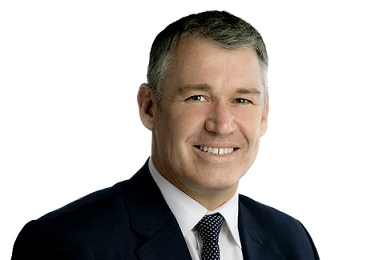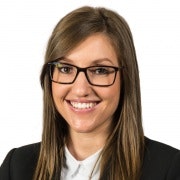Top fund managers: Bentham Asset Management
Summary: In the first part of a series of fund manager interviews, we speak to Bentham Asset Management CEO Richard Quin. His Global Income Fund and High Yield Fund take a global approach to fixed income. Although investment grade bonds are traditionally senior but unsecured, Quin prefers non-investment grade companies that issue secured loans. |
Key take out: Quin says his High Yield Fund provides higher income than investment grade bonds but has been less volatile than equities. |
Key beneficiaries: General Investors. Category: Investment Portfolio Construction. |
What makes one fund manager stand out from the pack? In the first of a regular series of fund manager interviews I'll be aiming to find out through one-on-one interviews with key personnel at some of the leading fund managers in Australia.
My first candidate is Richard Quin, the CEO and head portfolio manager from Bentham Asset Management, who oversees the Bentham Global Income Fund and the Bentham High Yield Fund. Quin takes a different tack to many of his peers in fixed income.
As he explains below, one of his main points of differentiation is buying non-investment grade secured income securities rather than taking the traditional approach of finding investment grade non-secured assets. Bold choices such as this have put Bentham at the top of the tables.
He's also prepared to take on risk. As he explains the essential feature of a fund manager should be to manage risk rather than to avoid it.

Bentham Asset Management CEO and head portfolio manager Richard Quin
Both funds have beaten their respective benchmarks over the five years to December 31, 2014. Over that time, the Global Income Fund reported a total return of 10.98% p.a. after fees, compared to a benchmark performance of 5.58% p.a., while the High Yield fund returned 12.68% p.a. after fees, against a benchmark of 12.07% p.a..
With domestic interest rates hitting record lows, fixed income managed funds offer investors the opportunity to get a better return than a term deposit without taking an excessive amount of risk relative to investing in other asset classes (in particular equities).
For most self-funded retirees access to the equity markets is easy, but invariably it is not possible to access and subsequently create a diversified credit portfolio, for a variety of reasons. This is where managed funds can help out.
KS: There are lots of fixed income managed funds available, but domestically you would have to be one of the best performing managers. What do you think makes you different?
RQ: The major thing that makes us different is that we are predominantly a credit investment manager. So we invest in fixed interest and credit assets. And we invest globally – we don't limit ourselves to Australia, which we think has a reasonably small pool of traded credit assets. We look for credit investment opportunities in the US, Europe and all around the world.
A global opportunity set gives us the best opportunity to pick the best yielding credit per unit of risk or the best relative value. That's how we create our portfolios for investors.
To give you that relative value, what are you looking for in each issue?
We look at the credit risk premium that we get paid. And we look at the leverage in the company, the ability of the company to survive different scenarios and we look at the security we get. Traditionally investment grade bonds are senior but unsecured. We prefer non-investment grade companies that issue secured loans.
All our portfolios have a large number of securities and very few securities that are not rated by a public ratings agency, such as S&P or Moody's. Bonds and loans that have a public rating tend to have more liquidity, which gives us more flexibility in buying and selling these assets. We like to invest in markets that are quite large and have lots of different types of investors, as this also helps provide liquidity due to their marketability.
What types of securities do you buy in the Global Income Fund?
We invest in all sorts of credit assets, everything from senior secured loans, unsecured bonds, high yield bonds, mortgage backed securities and convertible notes. We also have some capital securities (known as hybrids locally), but normally we buy these overseas. (To read more on hybrids, see The alternatives to bank hybrids, February 11.)
Is that because you think our hybrids aren't good value?
Not necessarily. We bought our overseas capital securities when they were much cheaper than the local ones. Some were Australian names, but we bought them at very low dollar prices. It's an asset class or sector that's very niche. You need to understand the regulatory structure and you also need to be able to price them. They have a lot of embedded options and we think we can price those options better than most.
How many securities would default entirely in a given year?
You can have quite a few defaults, and when you invest in High Yield bonds you expect defaults. And that's one of the reasons we have so many different issuers (or companies) in the portfolio. In the Bentham High Yield Fund the most we would invest in any one high yield company would be 2 per cent. This helps manage the credit risk. At the moment the fund has over 165 issuers in and is not concentrated in any one industry.
Both the Bentham Global Income Fund and High Yield Funds have had lower defaults than the broader market. When asset managers say that they have no defaults in a credit portfolio, they will probably have provided you with very little return. You have to take some risk to make a return. The key is to manage risk.
Interest rates around the globe are low. How do you manage that?
We are an unusual beast because we don't have very much interest rate risk in our Global Income portfolio right now. We just don't think it's a good risk to take.
The High Yield Fund has some interest rate duration of about 3.8 years (versus the index 4.7) and we don't feel comfortable hedging out this interest rate duration, because it can be negatively correlated with the credit risk in High Yield. So we tend to keep some interest rate duration in this fund.
For the Global Income Fund, how much weight do you give the US Federal Reserve when it comes to positioning your portfolio and expectation of lifting rates?
We listen to what's going on, but I wouldn't say we construct our portfolio according to the Fed.
We never robotically follow anyone, we just have to mitigate risk in our portfolio. And we spend a lot of time talking about risk. We look at the downside risk more than most people which makes us the least optimistic people to talk to.
On the High Yield Fund, why should investors consider it?
High Yield provides higher income than investment grade bonds but with more capital volatility. High yield bonds are not a well understood asset class by Australian investors. Investing in high yield can be rewarding for people looking for higher income, but the investment must be highly diversified. We believe that it requires 4-5 times as many company exposures as an equity portfolio, and they must be traded.
You wouldn't tell someone to put 25% of their fund into the high yield bonds?
You're right, 25 per cent would be absolutely ludicrous. Maybe 5 or 10 per cent maximum. It can be appropriate for some people. It also depends how much money investors can afford to risk. But High Yield has done very well as an asset, but also has some interest rate duration. It has been less volatile than equities and has delivered a similar return.
We would say you could put a reasonable amount of your funds into the Global Income Fund, because it is less risky than High Yield bonds, with a minimum of 50 per cent of that fund must be investment grade. It's more of a multi sector, global credit fund.
Kirstie Spicer is content director at brightday. The Bentham Global Income Fund and the Bentham High Yield Fund are available on the brightday platform.
















